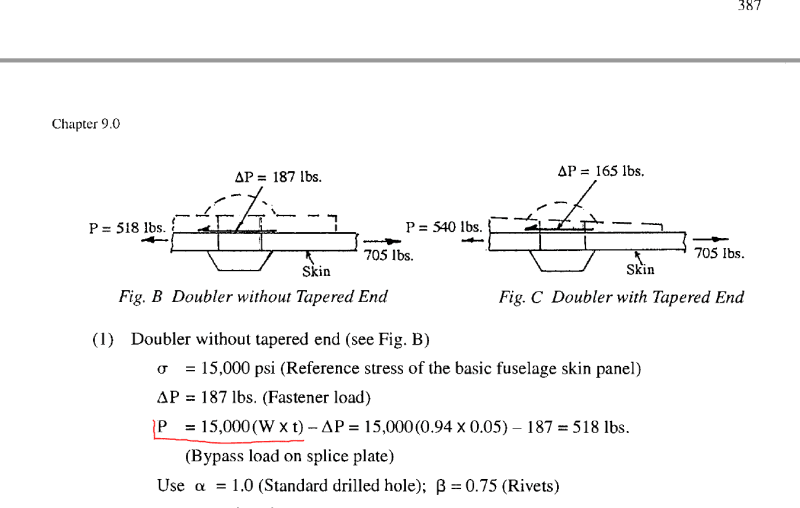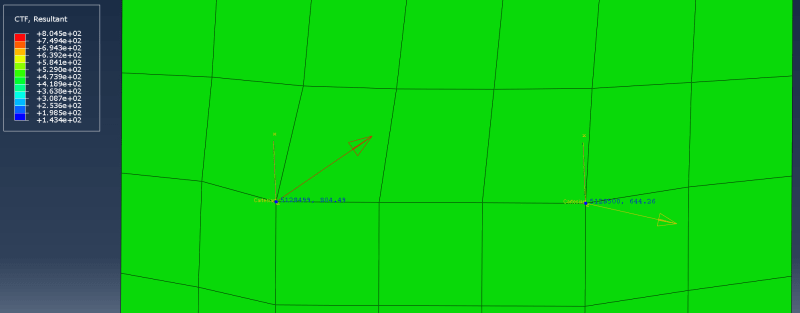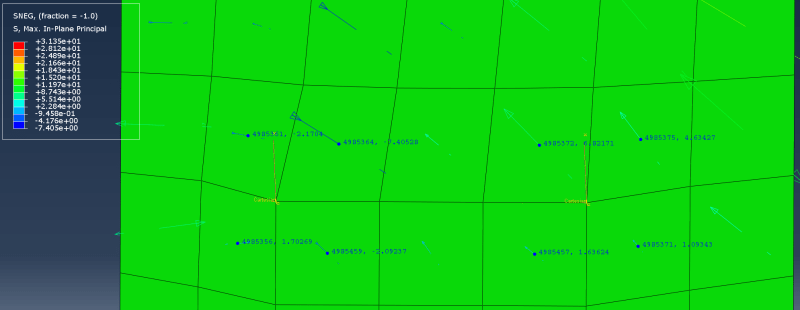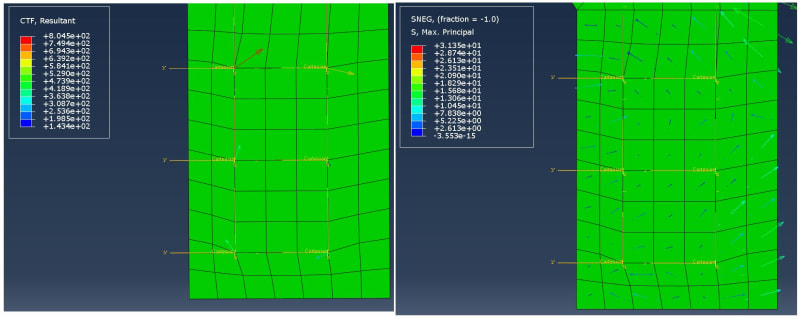@Ng2020
yes, the loads are mainly in plane( meaning mostly shear loads are on the rivets) but i still would like to (probably have to) take axail loads into account as it can change the results at few joints.
What does fbr/ft mean exactly? Boiling it down to 1d problem is also not clear.
@Joe Moore
Thanks for your comment. It is clear that Von-Mises is scalar value, it was not the main point of my question.
"With Metals you do not adress bypass stresses"? Is it really so because what i found so far in forum threads and including Niu`s book says so.. Could you maybe give some reference where it is cleared, if it is really wrong?
Actually i do not use CBUSH elements but in the model posted above are the fastener elments form Abaqus are used. (as far as i know distribution is also included which should help against mesh-size-dependency stiffness problem.
@ Everyone
But anyway regarding stiffness modeling approaches there are several documents, papers which can help a lot. But what about the rest of the approach for a fatigue or ultimate calculation? Regarding that i am looking for some answers.
The structure`s geometry is "kind of complex" (and i am sure i am not the first one with such problems especially if we think about aircraft structures) still i could not find any 100% clear exaplanation of calculation procedures for a bit more complex joint calculation for ultimate and/or fatigue load cases.
Regarding stiffness and model build up approach there i found some useful informations (from ESPcomposites mainly).
So lets say there is a joint with complex loads and properly built-up modell with correct stiffnesses:
1. How could one predict/evaluate from a FEM calculation a Net section stress for ultimate loadcase?(especially if the holes are not included in the model as on the other comments suggested.) Correct me if i am wrong but that would be the only neccessary failure mthod to check as the bearing and shear of the rivets could be checked simply by calculating Connector shear force/given shear or bearing area.
2. How could one predict/evaluate from a FEM calculation bypass stresses for fatigue calculation? or should i take a step back and ask "a whole fatigue calculation" if bypass loads are really unneccessary? What are the loads/stress values/whatever, which are evaluated..?
I would really appriciate some useful answers. Thanks in advance!





